Growing Orchids in a Greenhouse: From a Cherished Dream to Blooming Splendor
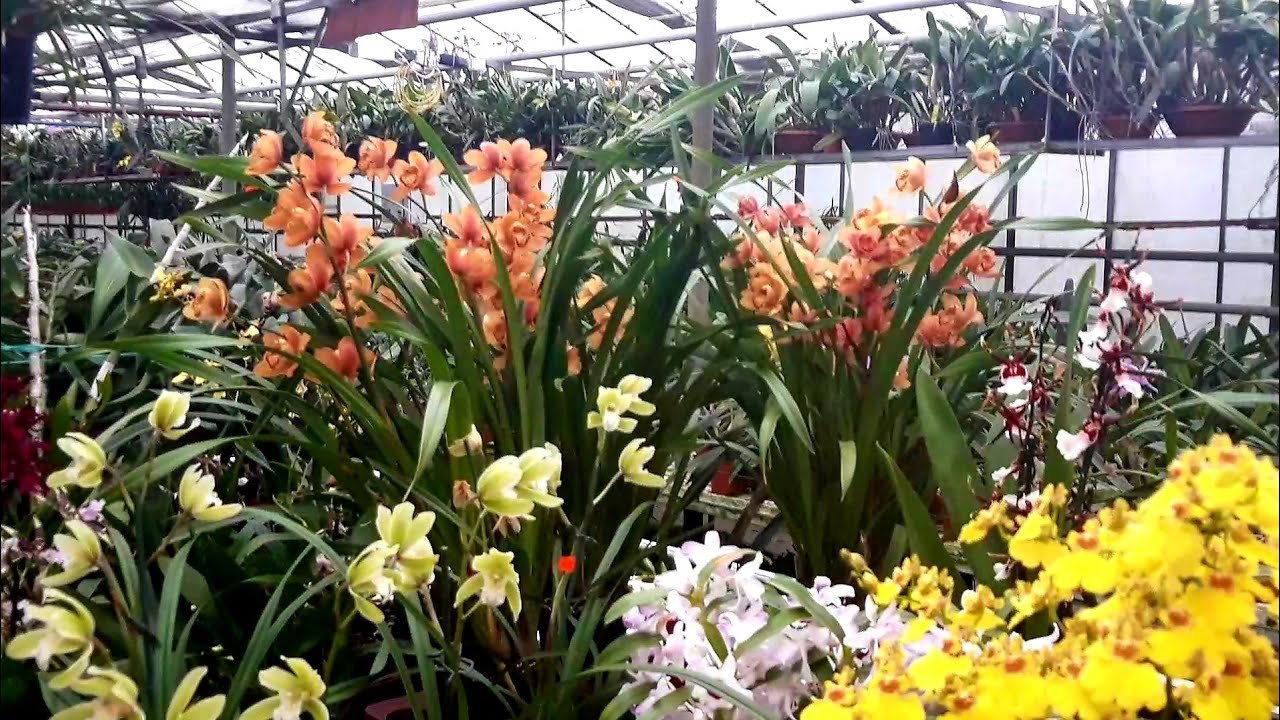
Orchids – these exotic beauties with their incredible variety of shapes and shades – attract many gardeners. But often the dream of having your own collection is shattered by the complexity of care in indoor conditions. Capricious, demanding of humidity, light and temperature – this is their reputation. But what if I tell you that there is a way not only to simplify the care of these aristocrats of the plant world, but also to achieve truly luxurious and regular flowering from them? The greenhouse can become that magical garden where your orchids will feel at home in a tropical paradise. Let's uncover the secrets of greenhouse orchid growing together and turn your wildest gardening fantasies into reality!
Benefits of Growing Orchids in a Greenhouse
The greenhouse provides unique opportunities for cultivating orchids that are difficult or impossible to recreate in a regular apartment:
- Creating an ideal microclimate: In a greenhouse, it is much easier to control and maintain stable parameters of air humidity, temperature and lighting, which are critical for most types of orchids.
- Optimal Humidity: Many orchids are epiphytes, accustomed to the high humidity of tropical forests. In a greenhouse, humidity can be maintained at 60-80% and higher, which promotes their healthy growth and development.
- Protection from adverse factors: Plants are protected from drafts, sudden temperature changes, dry air from heating systems in winter and direct scorching rays of the sun in summer (with proper shading).
- Better lighting: The ability to provide orchids with the required amount of diffused light, including with the help of supplementary lighting systems in the autumn-winter period.
- Prevention of some problems: With proper ventilation and hygiene, you can reduce the risk of developing some fungal and bacterial diseases.
- Possibility of growing rare and demanding species: Greenhouse conditions allow for the successful cultivation of those species of orchids that are almost impossible to grow indoors.
- Growing space: In a greenhouse, orchids can grow freely without being constrained by a windowsill.
- Aesthetic pleasure: A greenhouse with blooming orchids is a real tropical corner, pleasing to the eye and soul.
Choosing Orchid Species for a Greenhouse
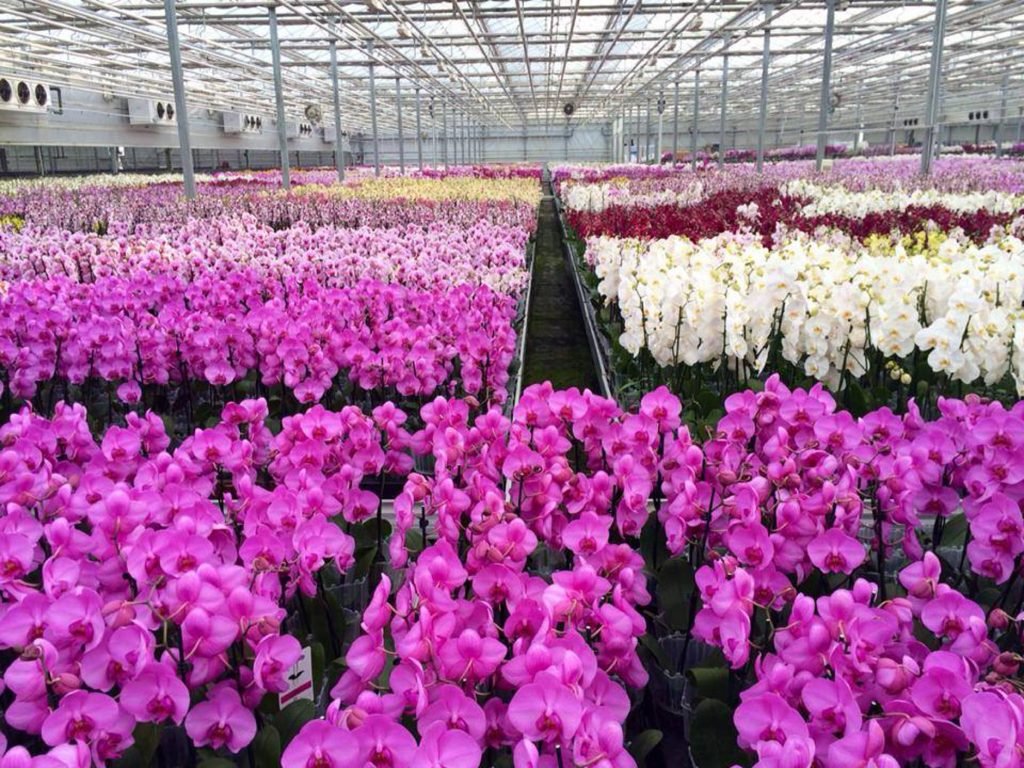
The world of orchids is vast, and not all of them are equally suitable for greenhouse maintenance or have similar requirements. When choosing, it is worth considering the temperature conditions of your greenhouse and your care capabilities.
Popular and greenhouse-friendly orchid groups:
- Phalaenopsis: “Butterfly Orchid”. One of the most popular and relatively undemanding orchids. Grows well in warm greenhouses (+18-28°C). Requires diffused light and high humidity.
- Cattleya and its hybrids: “The Queen of Orchids”. Known for its large, fragrant flowers. Requires bright, diffused light, good ventilation and a distinct rest period in some species. The temperature regime is moderate or warm.
- Dendrobium: A very diverse genus. There are species for warm, temperate and cool greenhouses. Many require a period of rest with lower temperatures and reduced watering to stimulate flowering (e.g. Dendrobium nobile).
- Cymbidium: Large orchids with long flower stalks. Prefer cool or moderate conditions (+10-25°C) and bright light. Many require a difference in day and night temperatures to set flower buds.
- Paphiopedilum: "Venus' slipper". Valued for the original shape of the flower. Most species prefer moderate temperatures, partial shade and constant substrate moisture.
- Vanda and its hybrids: Epiphytic orchids with powerful aerial roots. Require very bright light, high humidity and good air circulation. Often grown in hanging baskets without substrate or with a minimum amount of it. Heat-loving.
- Miltonia and Miltoniopsis: “Pansy Orchid”. Prefer moderate temperatures, diffused light and high humidity. Sensitive to substrate salinity.
- Oncidium and its hybrids: “Dancing Dolls”. A diverse group, many species prefer moderate conditions, bright diffused light and good root aeration.
What to look for when choosing:
- Temperature requirements: Orchids are divided into heat-loving (average temperature +20-28°C), moderately loving (+16-24°C) and cold-loving (+10-18°C). Choose species that match the temperature regime of your greenhouse.
- Light requirements: Some orchids need bright light, others prefer partial shade.
- Humidity: Most orchids require high humidity, but there are more drought-tolerant species.
- Size of adult plant: Consider the dimensions of the greenhouse.
- Difficulty of care: Beginners should choose more hardy and unpretentious species (for example, Phalaenopsis).
Preparing the greenhouse and creating conditions
Creating the right microclimate is the key to success.
- Greenhouse design and materials:
- Frame: Metal or wood (treated with antiseptic).
- Coating: Glass (transmits light well, but is heavy and fragile) polycarbonate (light, durable, retains heat well, diffuses light), film (less durable but affordable) Orchids need diffused light, so frosted polycarbonate or shading for glass/clear polycarbonate would be preferable.
- Ventilation: Windows (top and side) are required to ensure air circulation. Installation of fans is desirable.
- Heating: For year-round cultivation or cultivation of heat-loving species, heating (electric, water, gas) is necessary.
- Lighting: Supplementary lighting system (phytolamps, full-spectrum LED lamps) to compensate for the lack of light in the autumn-winter period or for shady areas of the greenhouse.
- Equipment and organization of space:
- Shelves and hangers: For placing pots, blocks and baskets with orchids at different levels. This allows for optimising the use of space and taking into account the light preferences of different species.
- Irrigation system: Drip irrigation, sprinklers or manual watering. To increase humidity – fogging system.
- Control devices: Thermometer, hygrometer for monitoring temperature and humidity.
- Shading: In summer, shading from direct sunlight is necessary (shading nets, whitewashed glass, blinds). The degree of shading depends on the orchid species.
- Gravel or expanded clay trays: Placing pots on trays of damp gravel helps increase localized humidity around the plants.
- Substrate preparation:
Most orchids are epiphytes and require a special, highly air- and water-permeable substrate that does not compact and provides aeration for the roots.
- Main components of the substrate:
- Coniferous tree bark (pine, larch): The basis for many substrates. Bark of different fractions (fine, medium, coarse) is used depending on the thickness of the orchid roots. The bark must be boiled or calcined before use.
- Charcoal: Has antiseptic properties, absorbs excess salts. Add in small pieces.
- Sphagnum moss: Retains moisture well, increases substrate acidity. Use live or dried. Can be added to the substrate or used to wrap roots when planting on a block.
- Fern roots (Osmunda): Nutrient and breathable component.
- Coconut chips and coconut fiber: Retain moisture well and provide aeration.
- Expanded clay, perlite, vermiculite: Used to improve drainage and aeration.
- Ready-made substrates: Ready-made mixtures for orchids are available for sale, but it is important to pay attention to their composition and quality.
- Important: The substrate should not contain ordinary garden soil!
Planting and replanting orchids
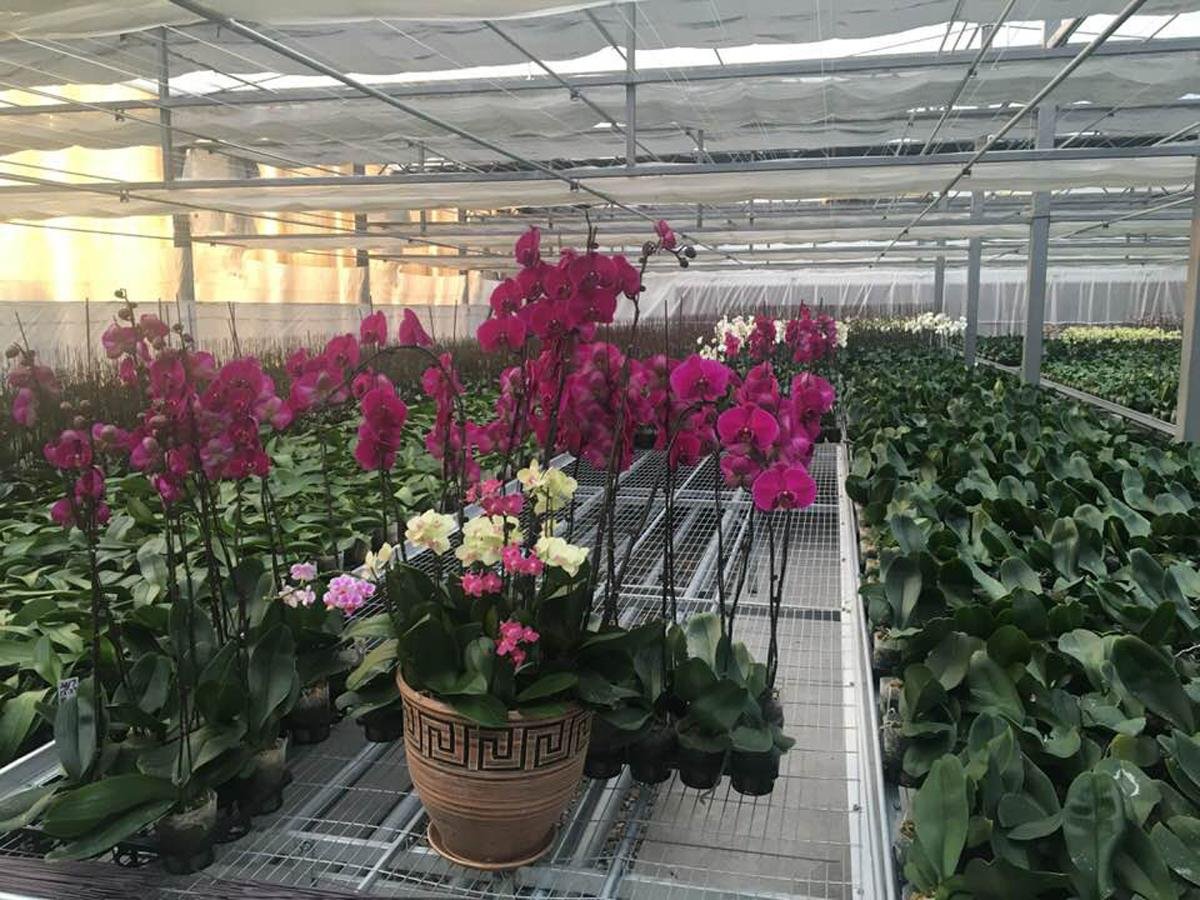
When to plant and replant?
- Purchased plants: Replant after flowering has finished if the substrate is of poor quality, the pot is too small, or there are problems with the roots.
- Planned replanting: It is carried out once every 2-3 years, when the substrate has decomposed, compacted or salted, or when the roots have filled the entire volume of the pot. The best time is the beginning of active growth of new roots and shoots (usually in spring).
- Do not repot flowering plants unless absolutely necessary.
Choosing a pot:
- For epiphytic orchids, transparent plastic pots are often used (they allow you to monitor the condition of the roots and substrate, and participate in photosynthesis in some species).
- Numerous drainage holes are required at the bottom and sides of the pot to drain excess water and aerate the roots.
- The pot size should be slightly larger than the root system. A pot that is too spacious can lead to substrate acidification and root rot.
- For some orchids (Vanda, Ascocenda) hanging trellis baskets or planting on blocks are suitable.
Planting/transplanting technique:
- Removing the plant: Carefully remove the orchid from the old pot, being careful not to damage the roots. If the roots have grown into the pot, you can cut it.
- Cleaning the roots: Carefully remove the old substrate.
- Inspection and treatment of roots: Inspect the roots. Remove all dry, rotten or damaged areas with a sharp sterile instrument (knife, pruning shears). Sprinkle the cuts with crushed charcoal, cinnamon or treat with brilliant green. Healthy roots in most orchids are dense, elastic, grayish-green or silvery (when dry) and bright green (when wet).
- Preparing a new pot: Place a drainage layer (expanded clay, large pieces of bark, polystyrene foam) 2-3 cm high on the bottom of the pot.
- Plant placement: Place the orchid in the center of the pot so that the base of the rhizome (for sympodial orchids) or the root collar (for monopodial orchids) is level with or slightly below the edge of the pot. New growth should have room to develop.
- Filling with substrate: Carefully pour the substrate between the roots, lightly tapping the pot to distribute it evenly. Do not compact the substrate too much, it should remain loose. The upper roots can be left partially exposed.
- Watering after replanting: Most orchids are not watered immediately after replanting to allow micro-injuries on the roots to heal. The first watering is after 3-7 days (depending on the humidity and type of orchid). At this time, you can lightly spray the surface of the substrate and the leaves.
Landing on the block:
Some epiphytic orchids (Vandas, Cattleyas, some Dendrobiums) grow well on blocks of bark, driftwood or pieces of fern. The roots of the plant are attached to the block with wire (braided) or fishing line, with a little sphagnum moss placed underneath. Such plants require more frequent watering and high air humidity.
Caring for Orchids in a Greenhouse
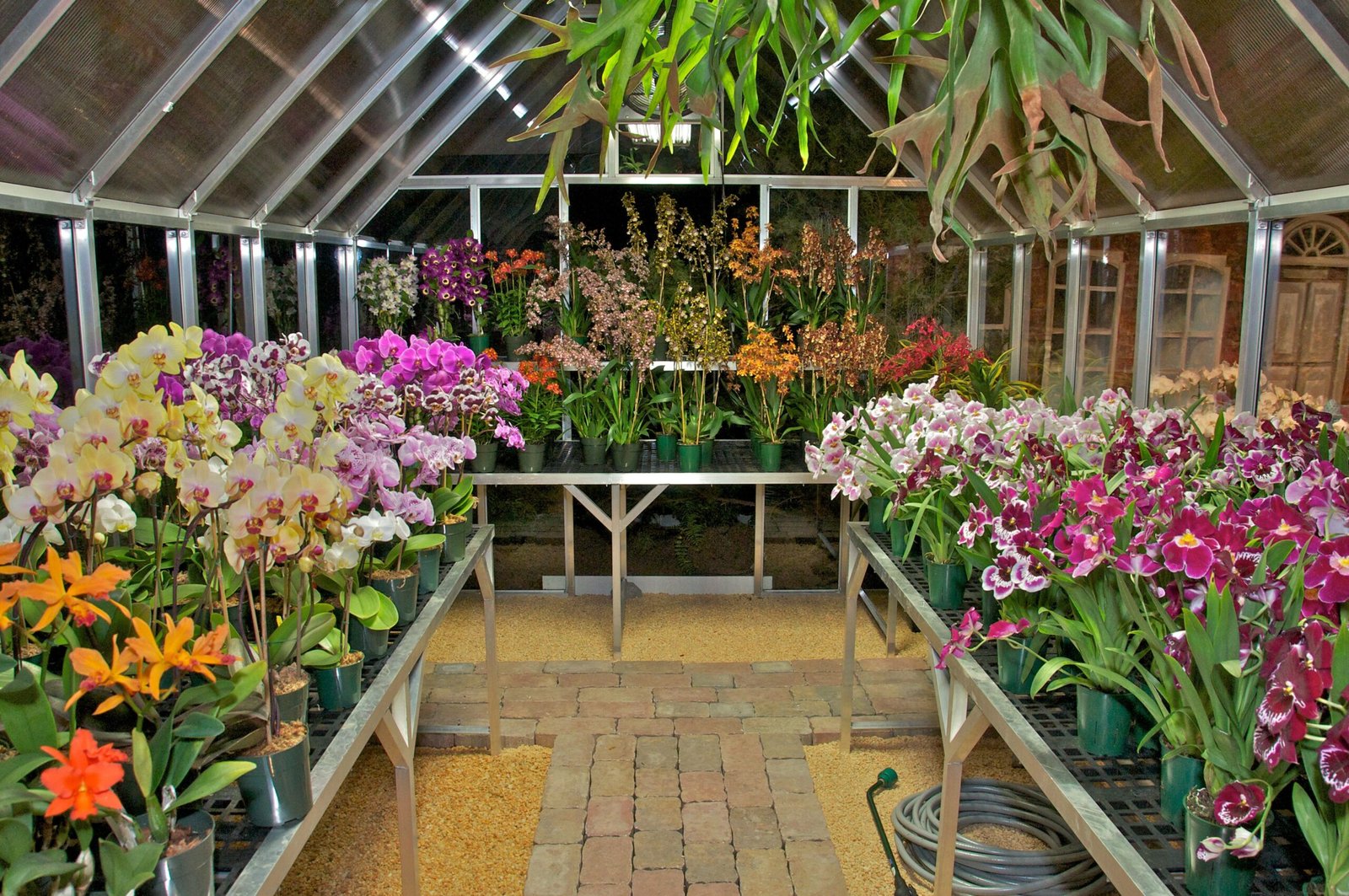
- Temperature conditions:
- Maintain temperatures according to the requirements of specific orchid species.
- Provide a daily temperature difference (night temperature 3-5°C lower than day temperature), this stimulates the formation of flower buds in many species.
- Avoid sudden changes in temperature.
- Lighting:
- Most orchids prefer bright, indirect light. Direct sunlight can cause leaf burns.
- Daylight hours should be 10-14 hours. Use additional lighting in the autumn-winter period.
- Place light-loving species (Vandas, Cattleyas) in more illuminated places, shade-tolerant ones (Paphiopedilums, Phalaenopsis) – in light partial shade.
- Signs of insufficient light: elongated, weak shoots, pale leaves, lack of flowering.
- Signs of excess light: yellowing or reddening of leaves, dry brown spots (burns).
- Air humidity:
- The optimal humidity for most orchids is 60-80%.
- Ways to increase humidity:
- Use of fogging systems.
- Placing trays with water and gravel under the racks.
- Spraying the air around the plants (not the plants themselves during cold weather or when there is a risk of fungal diseases).
- Grouping of plants.
- Important: High humidity must be combined with good ventilation to avoid air stagnation and the development of rot.
- Watering:
- Basic rule: Water generously, but allow the substrate to dry out well between waterings. The frequency of watering depends on the type of orchid, growth phase, temperature, lighting, air humidity, type of substrate and size of the pot.
- Watering methods:
- Submersion: The orchid pot is immersed in a container of water for 15-30 minutes so that the water almost reaches the edge of the pot. Then the excess water is allowed to drain completely.
- Watering from above: The substrate is watered generously with water from a watering can until water begins to flow out of the drainage holes.
- Hot shower (imitation of a tropical downpour): Some orchids respond well to watering with warm water (+35-45°C) from a shower. After the procedure, the plant should dry well in a warm place without drafts.
- Water quality: Use soft, settled (at least 24 hours), filtered or rain water at room temperature or slightly warmer. Hard water leads to salinization of the substrate.
- Signs to water: Lightened roots (in Phalaenopsis), light weight of the pot, dry to the touch substrate at a depth of several centimeters.
- During the dormant period, watering is significantly reduced or stopped (for species with a pronounced dormant period).
- Fertilizer (top dressing):
- Orchids are fed only during the period of active growth (new leaves, shoots, roots).
- Use special fertilizers for orchids with a reduced salt concentration.
- Rule: It is better to underfeed than overfeed. The concentration of fertilizer is usually made 2-4 times less than indicated on the package for ordinary indoor plants.
- Frequency of feeding: Every 2-4 weeks during active growth.
- Method of feeding: Combine with watering (dissolve the fertilizer in water for watering) or carry out foliar feeding (spray the leaves with a very weak solution of fertilizer, avoiding contact with flowers).
- Do not fertilize sick, weak or newly transplanted plants, or orchids during the dormant period.
- Alternate root and foliar feeding.
- Ventilation:
- Regular ventilation of the greenhouse is necessary to prevent air stagnation, reduce the risk of fungal diseases and provide plants with fresh air rich in carbon dioxide.
- Avoid drafts, especially during the cold season.
- Fans help improve air circulation.
- Rest period:
Many orchid species (Cattleya, Dendrobium, Cymbidium, etc.) require a period of rest to form flower buds. This usually occurs after new shoots have finished growing.
- Conditions of the dormant period:
- Temperature reduction (by 5-10°C, depending on the type).
- Reduce or stop watering (the substrate should dry out almost completely).
- Stop feeding.
- Provide sufficient lighting (for some species, bright light).
- The duration of the dormant period ranges from several weeks to several months.
- Coming out of the dormant period is a gradual resumption of watering and an increase in temperature when signs of new growth or flower stalks appear.
Disease and pest control
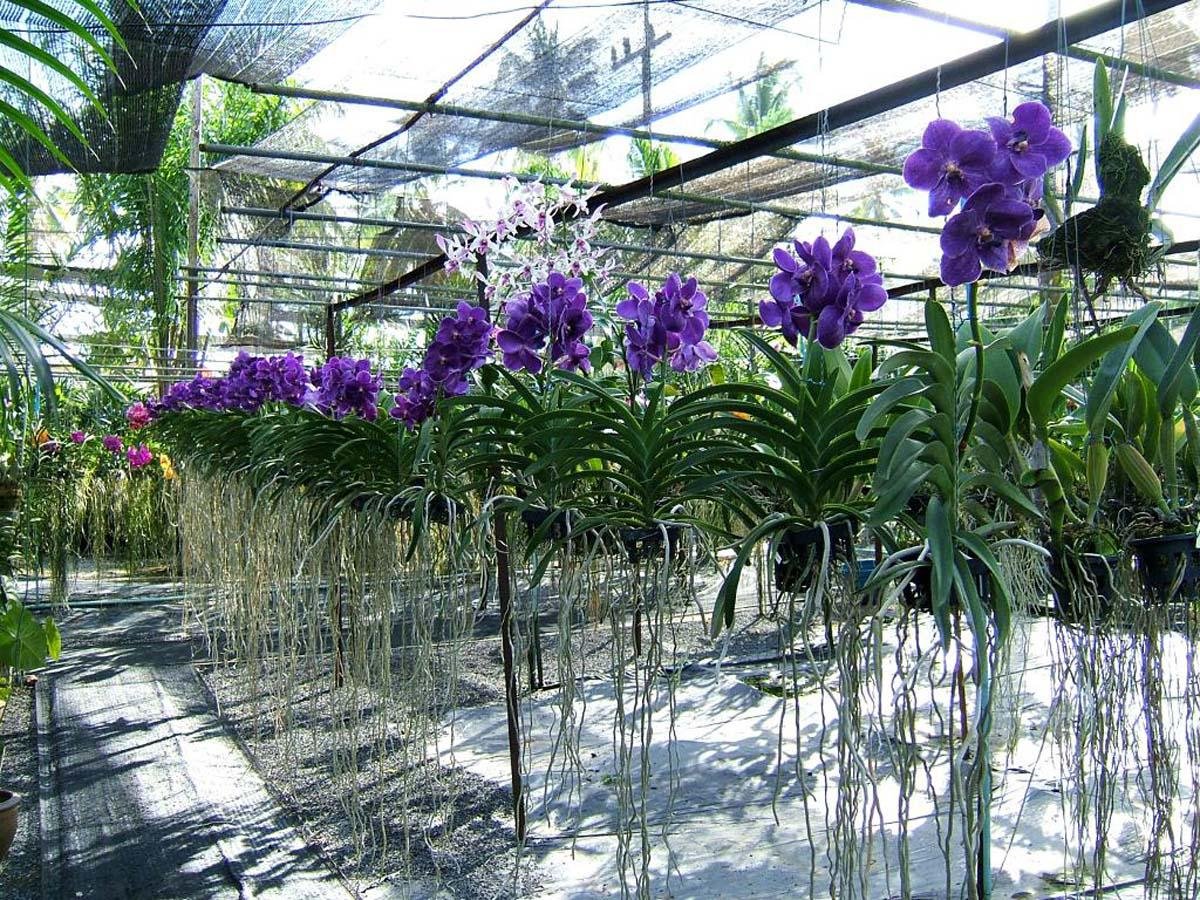
Regular inspection of plants will help to identify problems in time.
Common orchid pests:
- Mealybug: White cotton-like accumulations on leaves, in axils, on roots.
- Control measures: Mechanical removal with a cotton swab soaked in alcohol or soap solution. Spraying with insecticides (Aktara, Confidor, Fitoverm).
- Scale insects and false scale insects: Small insects covered with a waxy shield. They attach themselves to leaves and stems.
- Control measures: Similar to the control of mealybugs.
- Aphid: Affects young shoots, buds, flowers.
- Control measures: Washing with water, spraying with soap solution, insecticides.
- Spider mite: A small spider that forms a fine web on the underside of leaves. Appears in dry air.
- Control measures: Increase humidity, spray with acaricides (Fitoverm, Actellic, Sanmite).
- Thrips: Small, mobile insects that leave silvery streaks and black dots (excrement) on leaves and flowers.
- Control measures: Spraying with systemic insecticides.
- Slugs and snails: May eat tender plant parts, especially in high humidity conditions.
- Control measures: Manual collection, traps, molluscicides.
Common orchid diseases:
- Rots (root, stem, leaf): Caused by fungi or bacteria due to excessive watering, poor aeration, low temperatures. Affected parts soften, darken, and become covered with a coating.
- Control measures: Removal of affected parts to healthy tissue. Treatment of cuts with fungicides (for example, “Fundazol”, “Maxim”) or antiseptics. Optimization of maintenance conditions (watering, ventilation).
- Anthracnose, leaf spots: Fungal diseases that appear as dark spots on leaves.
- Control measures: Removal of affected leaves. Treatment with fungicides (Skor, Topaz, copper-containing preparations).
- Viral diseases: Manifested as mosaic coloring of leaves, deformation of flowers. Not curable. Diseased plants are destroyed to prevent infection of others.
Preventive measures:
- Quarantine for new plants (2-4 weeks).
- Maintaining hygiene (clean tools, pots).
- Optimal conditions of maintenance.
- Regular inspection of plants.
- Avoiding over-moistening of the substrate and air stagnation.
Flowering and care after flowering
- Stimulating flowering: Maintaining a dormant period (for those species that require it), providing sufficient lighting and day/night temperature differences.
- Care during flowering: Maintain stable conditions. Do not move or turn the flowering plant unnecessarily. Provide support for heavy flower stalks.
- After flowering:
- Flower stalk: In Phalaenopsis, the flower stalk can be cut off above a dormant bud (if it is green), from which a new flower stalk or baby may develop. Or cut off completely at the base if it has dried out. In most other orchids, the faded flower stalk is cut off at the base.
- Repotting (if necessary): After flowering is the right time for repotting.
- Dormant period: Many orchids enter a dormant period after flowering.
Your Greenhouse Eden for Orchids – Art Available to Everyone
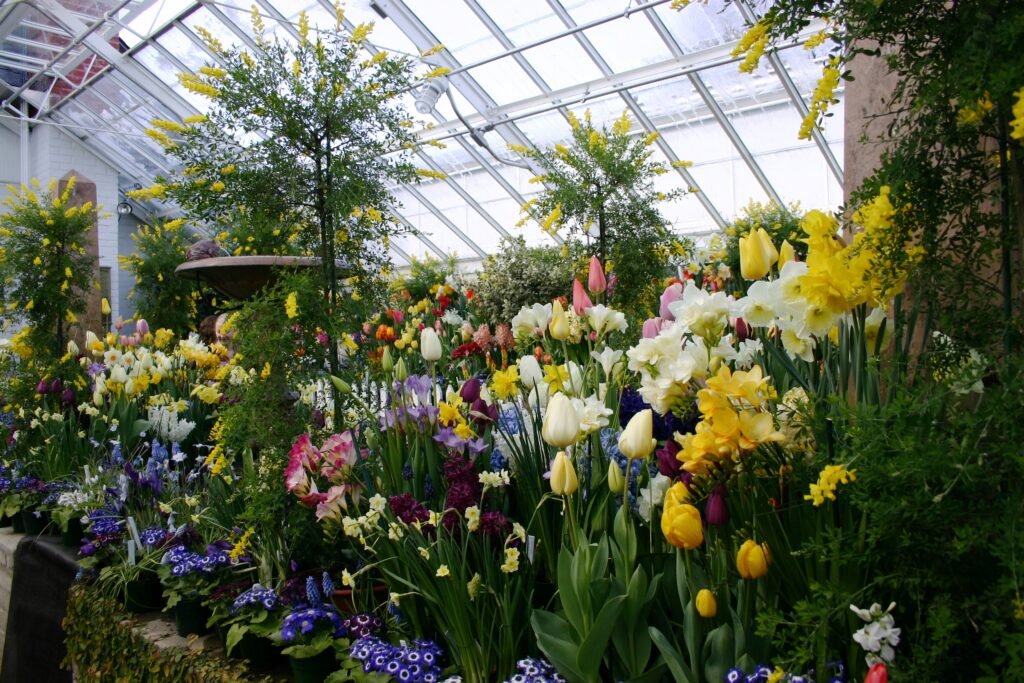
Growing orchids in a greenhouse is not just a hobby, it is an art that requires knowledge, patience and love. However, as we have seen, creating your own tropical paradise for these exquisite flowers is quite within the power of an enthusiastic gardener. We have examined in detail all aspects of this fascinating process: from choosing the right species that can thrive in your greenhouse conditions and carefully preparing the greenhouse itself - your future "orchidarium", to the intricacies of creating the ideal substrate, proper planting and daily care, including precise watering, balanced feeding and maintaining the delicate balance of light, heat and humidity.
We paid special attention to such important points as the organization of a dormant period for many species, without which it is impossible to achieve regular and abundant flowering, as well as methods of combating possible diseases and pests that can spoil the joy of contemplating these beautiful creations of nature. Remember that a healthy, well-groomed orchid, surrounded by care, will definitely thank you with its unique, magical flowering.
The greenhouse gives you a unique chance not just to grow orchids, but to collect them, experiment with rare and exotic specimens, creating a living, constantly changing exposition. Let every new sprout, every bud and every blossoming flower become a source of pride and inspiration for you. Your greenhouse Eden is waiting for its creator!





